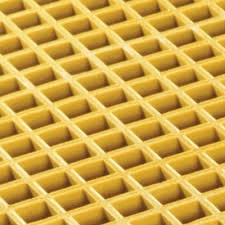loading...
- No. 9, Xingyuan South Street, Dongwaihuan Road, Zaoqiang County, Hengshui, Hebei, China
- admin@zjcomposites.com
- +86 15097380338
- Welcome to visit our website!
Innovative Reinforcement Solutions with FRP Bars for Enhanced Structural Integrity
FRP Bars The Future of Reinforcement in Construction
Fiber Reinforced Polymer (FRP) bars have emerged as a revolutionary solution in the construction industry, providing innovative reinforcement alternatives to traditional steel rebar. With their unique capabilities and benefits, FRP bars are gaining traction, particularly in environments where traditional materials may falter.
FRP bars are composed of a polymer matrix reinforced with fibers, which can include glass, carbon, or aramid. This composite material is engineered to offer high strength while maintaining a lightweight profile. One of the most significant advantages of FRP bars is their resistance to corrosion. Unlike steel, which can deteriorate when exposed to moisture and chemicals, FRP bars exhibit excellent durability, making them ideal for applications in marine environments, chemical plants, and other settings prone to harsh conditions.
.
Beyond their physical attributes, FRP bars demonstrate exceptional tensile strength. They can absorb significant amounts of stress without failure, which enhances the load-bearing capacity of structures. This feature is particularly valuable in seismic zones, where the flexibility and strength of FRP can help buildings withstand earthquakes more effectively than traditional materials. By integrating FRP bars into their design, engineers can create structures that are not only strong but also resilient to natural disasters.
frp bar

However, the transition to using FRP bars is not without its challenges. The initial cost of these materials can be higher than that of conventional steel reinforcement. However, when factoring in the long-term benefits of reduced maintenance and increased lifespan, the overall cost-effectiveness of FRP becomes apparent. Furthermore, ongoing advancements in manufacturing technology are expected to decrease production costs, making FRP bars more accessible to a wider range of projects.
Additionally, the industry is witnessing an increasing integration of FRP bars in various applications, from bridges and parking decks to tunnels and waterfront structures. The successful case studies of FRP-reinforced structures are promoting further research and development, leading to enhanced formulations and designs that optimize performance even more.
Sustainability is another driving force behind the adoption of FRP bars. As the construction industry shifts towards more eco-friendly practices, the use of materials that require less maintenance and possess a longer service life aligns with global sustainability goals. FRP bars contribute to this objective by reducing the need for frequent repairs and replacements, lowering the carbon footprint associated with construction activities.
In conclusion, FRP bars offer a robust, durable, and resilient alternative to traditional steel reinforcement in construction. Their unique properties make them particularly suitable for challenging environments, contributing to safer and longer-lasting structures. As technology advances and costs decrease, the integration of FRP bars into standard building practices is likely to grow, paving the way for a more efficient and sustainable future in construction. As we look to the horizon, FRP bars stand at the forefront of innovation, ready to redefine the standards of reinforcement in the built environment.
-
The Rise of FRP Profiles: Strong, Lightweight, and Built to LastNewsJul.14,2025
-
SMC Panel Tanks: A Modern Water Storage Solution for All EnvironmentsNewsJul.14,2025
-
GRP Grating: A Modern Solution for Safe and Durable Access SystemsNewsJul.14,2025
-
Galvanized Steel Water Tanks: Durable, Reliable, and Ready for UseNewsJul.14,2025
-
FRP Mini Mesh Grating: The Safer, Smarter Flooring SolutionNewsJul.14,2025
-
Exploring FRP Vessels: Durable Solutions for Modern Fluid HandlingNewsJul.14,2025
-
GRP Structures: The Future of Lightweight, High-Performance EngineeringNewsJun.20,2025
